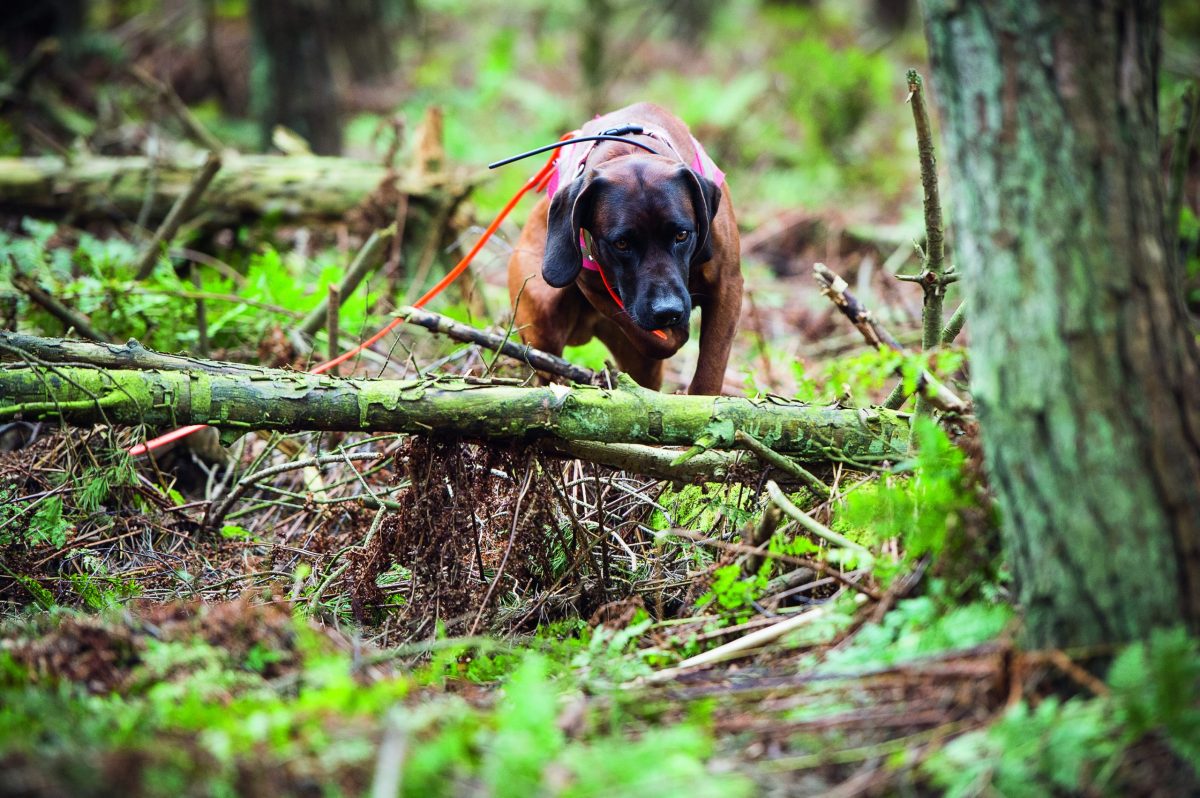Stalking with a Bavarian mountain hound
Adding a well-trained Bavarian mountain hound to the stalking team will be a tremendous asset when tracking down wounded or shot deer

It is a real eye-opener to see a tracking dog, such as a Bavarian mountain hound, work in the field
We have as good as finished our fallow cull and only plan to take a buck or two before the end of the month if we feel the need. Thankfully, after playing catch-up last year when our fallow cull was considerably higher than normal, we seem to be back to somewhere near where we want to be.
The price per kilo is almost back up to where it was pre-pandemic and, most importantly, the butchers and dealers are taking as much as we can supply. I fully understand keepers and stalkers not wanting to cull more than they could move or eat themselves when the dealers were closed, but people refusing to cull when the price per kilo was down — and one or two holding on even now thinking the price will increase further — are missing the point of the cull.
This has no doubt been part of the reason for the spike in numbers this past couple of years, along with some recreational stalkers taking on more ground than they can manage and some older ones finding it more difficult and being unable to take as many beasts as they used to.
Fallow numbers are still increasing, but thankfully not in the leaps and bounds they once were. We are seeing more roe and muntjac are starting to put in an appearance. As our cull increases, and our newly planted woods and the areas that have been left for natural regeneration thicken up, it is inevitable that the number of shot deer we struggle to find will increase at the same time.
More on deer stalking:
- Taking advantage of the longer days for roebuck culling
- Why studying your local roe deer population is essential to good stalking
- Chris Dalton talks about living in the golden age of roebuck
Wounded
Until a few years ago, I had used one of my labradors to track wounded animals and to find dead ones that had run on and were lying out of sight in the thick stuff, but I had only limited success. The dead ones were fairly easy to find, but it still took time. The labrador had been given its head to pick runners on shoot days, so trying to get it to track wounded animals at a speed at which I could follow was next to impossible. It was equally difficult trying to get the dog to track while on a lead or walking at heel.
I thought about getting a pointer, but they are not really for me. It wasn’t until a friend of mine bought and started using a Bavarian mountain hound for tracking that I really appreciated what a well-trained specialist tracking dog could do. Jim and his dog have tracked animals for me for several years now. Although it is usually only one or two animals a year, and perhaps the odd call-out for him to check a shot site for blood and hair if one of us has an unexplained miss, it is really useful.
Having to rely on someone else isn’t ideal, though, no matter how good or how local they are. There are bound to be times when they are away, or working or stalking themselves and won’t be able to get across to you to have a look. That is why I have decided to get a Bavarian of my own.
I intend to stalk with it and hopefully get it to indicate deer I can’t see, check shot sites for bone fragments and clipped hairs, to look for heart-shot animals that have run on and, eventually, use it to track wounded animals. We don’t have many, but it does happen and it would be wrong of me to pretend it doesn’t.
Whether the number of wounded animals and the number of animals that run on to drop out of sight will increase as we move across to non-lead ammunition remains to be seen, but so far I am happy with how the alternatives are working and don’t foresee any problems. That is a credit to the manufacturers and a feather in the cap of the keepers and stalkers who helped to develop them.








